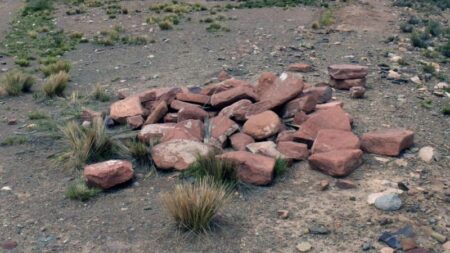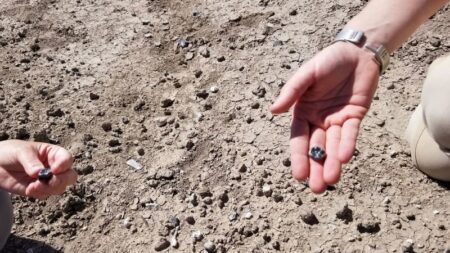The recent announcement from Firefly Aerospace has highlighted an exciting development in the realm of lunar exploration with its Blue Ghost lunar lander. This innovative spacecraft has successfully captured its first images of the moon during its orbit around Earth. Firefly Aerospace, based in Texas, shared this landmark achievement with the public, dispelling the shadows surrounding their lunar mission and providing a fresh glimpse into our celestial neighbor. The images were made public via the social media platform X, showcasing a view of the moon from the lander’s top deck and an isolated snapshot of the moon itself.
As the Blue Ghost continues its journey towards the moon, with a landing date projected for March 2, 2024, Firefly Aerospace has committed to delivering regular updates on the mission’s progress. This dedication ensures that enthusiasts and scientists alike can stay informed about the mission’s milestones. The company has also noted that the lander’s capabilities extend beyond lunar imagery, as it has been diligently capturing and transmitting images and videos of Earth. In one instance, the Blue Ghost recorded stunning footage of Earth eclipsing the sun, providing a unique perspective on a cosmic event that showcases the majestic interplay of celestial bodies.
Firefly Aerospace’s chief engineer, Will Coogan, has taken pride in the progress made so far. He expressed that the images captured by Blue Ghost epitomize the relentless passion and commitment of the team over the past three years. According to him, this mission is merely the beginning of a broader journey into space exploration. The spacecraft is currently orbiting Earth, having launched on January 15 via a SpaceX Falcon 9 rocket. Within a week, the lander is expected to exit Earth’s orbit, embarking on an approximate four-day voyage to the moon, where it will spend 16 days orbiting its surface before attempting to descend.
Coogan has noted that Blue Ghost is already a third of the way to the moon, hinting at more extraordinary imagery to come. The primary objective of the mission is to collect critical scientific data that will aid NASA’s ongoing explorations and plans for a sustained lunar presence. This mission is particularly significant in the context of NASA’s Artemis program, which seeks to return astronauts to the lunar surface for the first time in over half a century. The Blue Ghost lunar lander is equipped with a suite of 10 NASA scientific and technological instruments as part of the Commercial Lunar Payload Services (CLPS) initiative, aimed at gathering and returning valuable data from the moon.
Recent updates indicate that all onboard NASA technology is functioning optimally, as confirmed by the NASA Artemis blog. Firefly CEO Jason Kim has expressed enthusiasm for the insights and visuals that the lander will provide. One exciting aspect of the mission is the potential to capture phenomena that have only been witnessed by previous Apollo astronauts. Kim noted the unique lunar horizon glow, a scattered light effect caused by floating electrostatic particles, which the Blue Ghost aims to record in high-definition.
Additionally, Firefly plans to document a total lunar eclipse from the moon—an event that occurs when Earth obstructs sunlight from reaching the moon, causing it to take on a reddish hue. This extraordinary event will take place on March 13-14, during which observers across multiple continents will have the opportunity to witness the moon transitioning into Earth’s shadow.
The targeted landing zone for Blue Ghost is near Mons Latreille, a volcanic formation situated on the lunar surface. This area lies within the Mare Crisium, or “Sea of Crises,” which is a significant impact basin measuring over 300 miles in diameter. Upon successful landing, the spacecraft will perform surface operations for one lunar day, equivalent to 14 Earth days, before entering the challenging conditions of lunar night, characterized by extreme cold that will likely halt all operations.
As Firefly Aerospace embarks on this ambitious lunar mission, the world watches with anticipation as it continues to contribute valuable insights into lunar science and exploration, paving the way for future endeavors beyond the moon.











